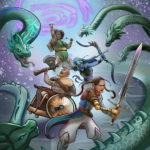Roll for Traits

Players can either roll for a random disability or discuss disability as part of their character concept with their GM, choosing specific traits, Frequencies, and IEs, keeping tropes to avoid in mind.
Game Masters especially who want to include a realistic percentage of disability in a game world’s population may find these random generators useful to provide a varied population. Fantasy worlds don’t need to have the same clusters of traits that we see in real-world experiences, but it’s also beneficial to use real-world clusters (diagnoses, both common and rare, and which vary by region or get organized differently by different cultures) to better understand the experiences of those around us, which again is why the tables allow you to “choose or roll.” Maybe you’ll do a little of both, or maybe you’ll use your first roll to find a real-world experience that includes that trait and learn more about it.
This suggestion also applies to the traits’ IEs and Frequencies. Instead of using tables to determine these, you may choose a frequency that ties into the narrative that you’re telling together, deciding in advance instead of leaving it to dice rolls.
Many people are afraid to represent these experiences in their games for fear of inaccuracy, but absence isn’t necessarily better, so we designed this book to get you started, to provide guidelines so you could feel free to add this inclusion creatively and respectfully.
Chance of Traits
15–20 percent of people worldwide in real life have some form of disability. In a world with less medical, therapeutic, and nutritional science but additional magic threats, the rate of disability is likely higher. GMs should decide the rate in the campaign world, but consider 20 percent to be the base rate. Roll 1d20, 1–4 indicating a disability. Any given population within that world should expect roughly the same percentage with possible variations based on environment and any number of other factors.
Number and Category of Traits
Many disabilities have multiple traits. Choose or roll on the following table to determine the number of traits your character has. If replicating a real-world cluster or more than one in the same character, you can increase or decrease the quantity.
| d20 | Traits |
|---|---|
| 1–7 | 1 |
| 8−12 | 2 |
| 13−15 | 3 |
| 16−17 | 4 |
| 18−19 | 5 |
| 20 | 6 |
Next, determine whether those traits are physical or mental. The first trait is equally likely to be physical or mental. (Roll d20: 1−10 = physical, 11–20 = mental) Subsequent traits are more likely to be in the same category, so add or subtract 2 cumulatively to the roll for the category of each additional trait. (e.g. 4 traits: First roll = 18 (mental), so the next roll would be 1–8 physical and 9–20 mental. Next roll = 10 (mental), so the next roll would be 1–6 physical and 7–20 mental. Next roll = 4 (physical), so the final roll would be 1–8 physical and 9–20 mental.) No matter how the range adjusts, a roll of 1 is always physical, and a 20 is always mental.